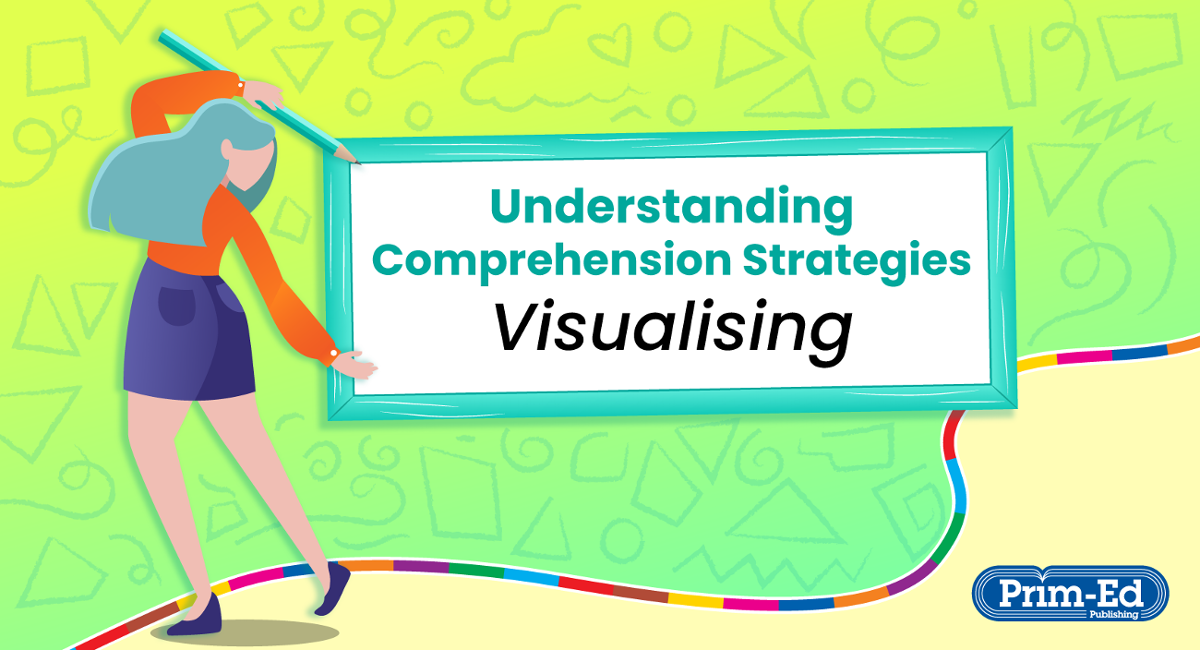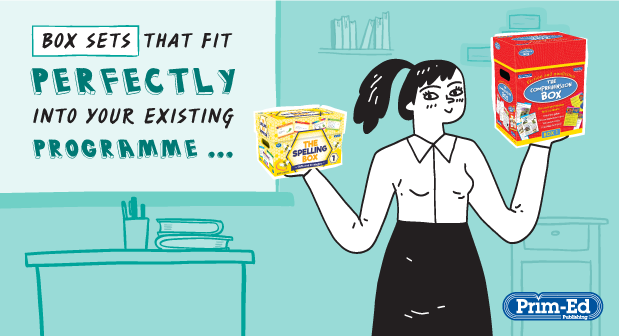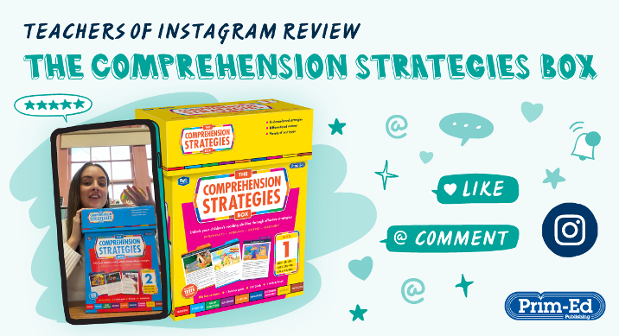- Wednesday 13 May 2020
Reading Comprehension Strategies – Visualising
The Visualising Reading Comprehension Strategy
Understanding what they read is one of the biggest difficulties a child will have while reading. It is therefore crucial that they are explicitly taught a range of strategies to encourage and master reading comprehension.
Visualising is one of many important reading strategies for children to learn and probably one of the easiest to teach. Visualising involves using prior knowledge and experiences to create a mental image from what is happening in a text read, viewed or heard. It brings a text to life and engages the imagination. Visualising uses all the five senses, not just the sense of sight, and children should be encouraged to use the other four senses to develop the best mental image.
The descriptive words within a text aid visualisation and as more of a text is read, the mental images created by the reader may change.
No two children will visualise the same mental image for the same text. It is like creating an image on a blank movie screen, where the text is the script and the reader is the director, who brings the movie (or text) to life, all built not only from the content of the text but also from each child’s personal background knowledge and imagination. For this reason, when it comes to the reading strategy of visualisation, there really is no right or wrong answer, as it’s very personal and unique to each individual.
Research shows that children who are good at visualising also develop a better comprehension of the text, are able to recall information well, ask more questions, pay more attention to detail and create more connections.
Visualising in the Classroom
Teachers can develop children’s visualising skills and therefore their ability to comprehend texts in a variety of ways.
Choose a picture or image and describe it to the children. Then show the children between two and four pictures and ask them to choose the one that they feel best matches the description and why. Using these same pictures, ask children questions about them to get them to really look at them. Questions could focus on who, what, quantity, colour, shape and size. Building on the work on these pictures, ask the children to describe the settings, how the pictures make them feel, what sounds they can hear and what smells they imagine.
Drawing activities also help to develop visualising skills. Ask the children to draw an image of a place; for example, a zoo or a beach. Do not give them any further information or any specific details. Once the drawings are complete, they should compare their drawings to those of other children. All the visualisation drawings should be different, as each child has their own unique and personal experiences of this place, which will inform their artwork.
Tasks where children need to describe nouns also help develop the skill of visualising. Give each table an object and ask the children to write (in secret) three words to describe the object. Once finished, they should compare their adjectives to discover whether there were any adjectives that more than one or two children thought of and if there were any adjectives that only one child thought of. Children should be encouraged to explain their word choices. This activity can be repeated with children thinking of adjectives to describe familiar nouns; for example, homes, family members and pets.
The teacher could also read words, sentences and paragraphs to children, encouraging them to close their eyes and image the text as a visual image. Start by saying a word; for example, tree. The children should close their eyes and visualise a tree. The teacher should then say a sentence and ask the children to visualise the sentence; for example, The tree swayed in the wind. This can then be extended to a longer and more complex sentence about the tree, several sentences about the tree, and finally a paragraph about the tree. Afterwards, children can discuss how their visual images of their tree changed as they were given more information. This activity would work well for characters and settings in fiction texts.
Children should also visualise parts of non-fiction texts; for example, what the ingredients in a recipe look, feel, taste and smell like when they are mixed or how a certain part of machine looks and feels, and the noise that it makes. Visualising the content of non-fiction texts is just as important as visualising the content of fiction texts and will help children in other subject areas and real life. To quote Albert Einstein, ‘’If I can’t picture it, I can’t understand it.’’
Templates could be used to help children record their visualisations in an organised way. These could encourage children to read a phrase or sentence and write or draw what they imagine in their minds or they could be directed to focus not only what they see in their visualisation, but also what they hear, smell, taste and feel, which should make their visualisation more vivid.
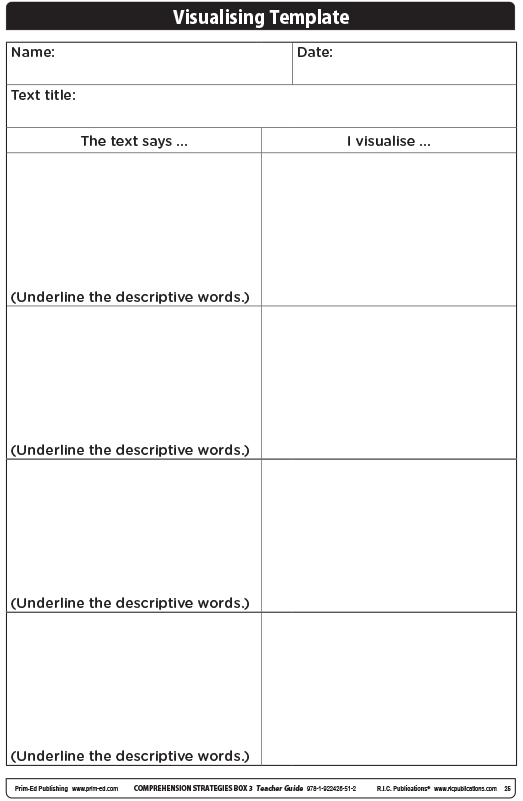
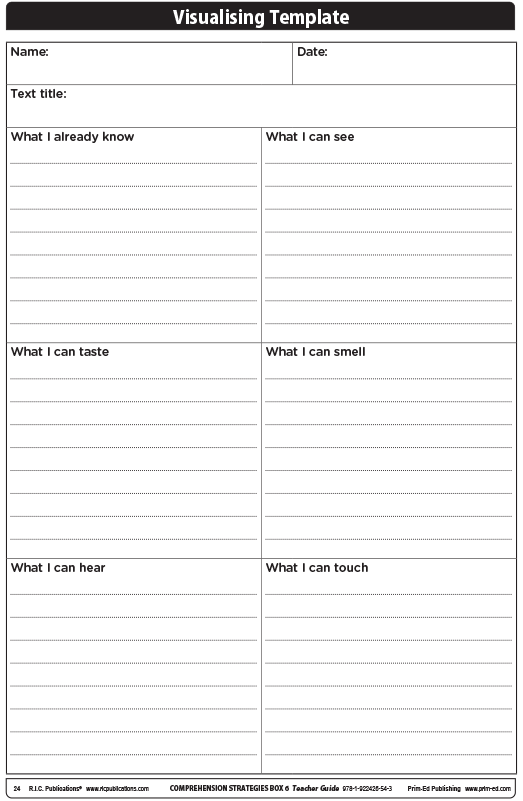


Templates from Teacher Guides in The Comprehension Strategies Box series.
Visualising in The Comprehension Strategies Box
Visualising is the second of nine reading comprehension strategies covered in the The Comprehension Strategies Box series. This boxed series, written at six levels for the six main primary school years, consists of full-colour, differentiated, fiction and non-fiction reading cards which cover nine different comprehension strategies, a comprehensive teacher guide that explains the strategies and how to use the series, and an activity book with photocopiable activities to enable children to focus on and practise each strategy.
Each reading strategy is introduced in the teacher guide, with a page of background information for teachers to familiarise themselves with.
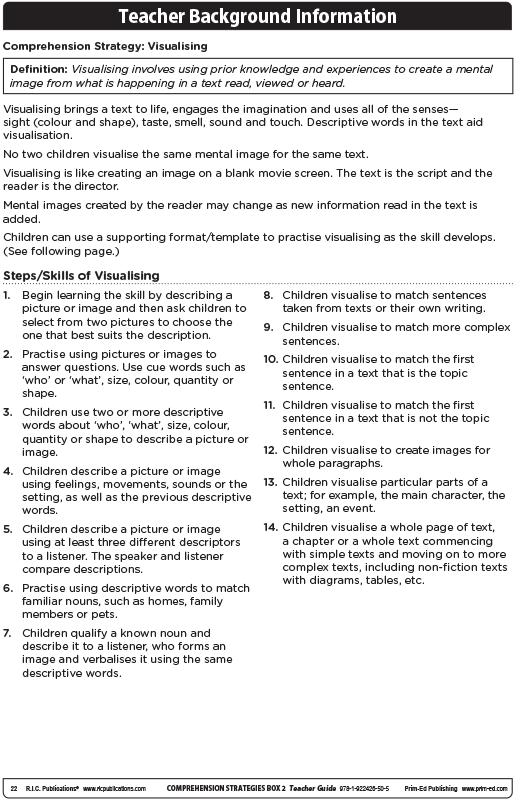
Sample page from Teacher Guide 2 in The Comprehension Strategies Box series.
The teacher should use the modelling text provided to introduce and demonstrate the visualising comprehension strategy to their class. The illustrated text should be displayed onto an interactive whiteboard, to enable the teacher to conceal and reveal parts of the text to the children, and highlight text and add annotations as appropriate. The steps the teacher should go through to model and teach the strategy are clearly laid out in the teacher notes. The modelling is oral and includes what the teacher should say at various stages of reading the text; for example, the title, the first paragraph, and so on. To start, the strategy is explained, before the children revise the five senses and how these will help them visualise parts of the text. Children are then asked questions about what they visualise when they read the title and various paragraphs from the text. The questions encourage the children to look for adjectives and use all their senses to create the best image in their mind and on paper that they can.
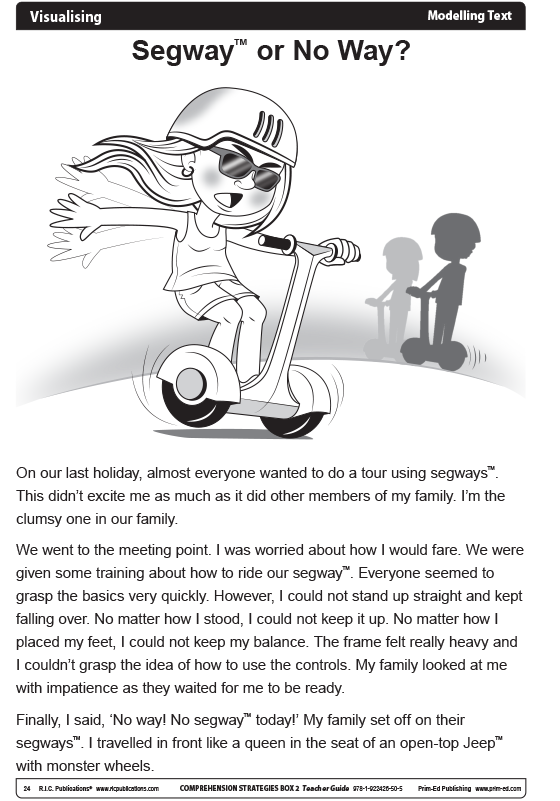
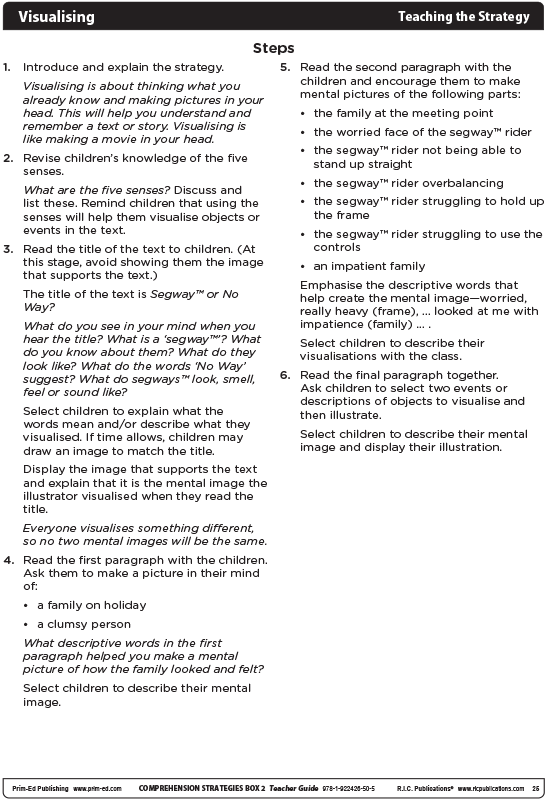


Sample pages from Teacher Guide 2 in The Comprehension Strategies Box series.
In a similar way to how the modelling text was presented and used with the class, the teacher should then present the sharing text. This can either be another oral activity or children may work with each other to answer the questions and practise the strategy together.
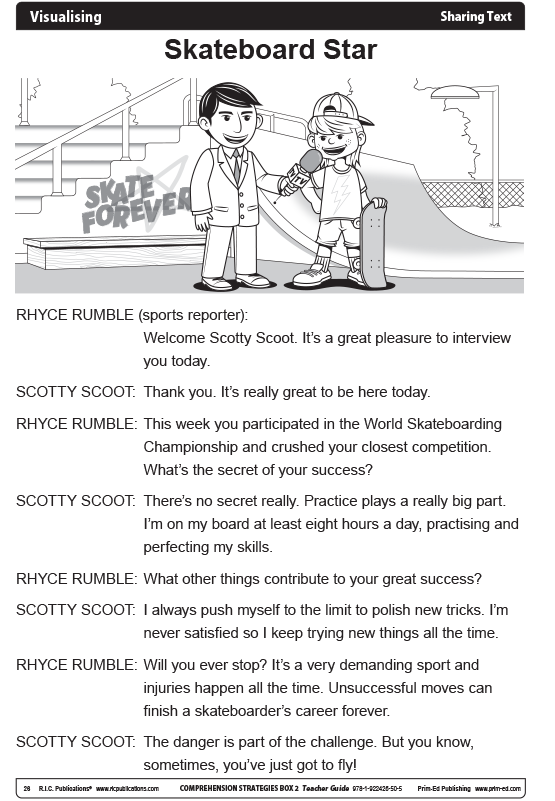
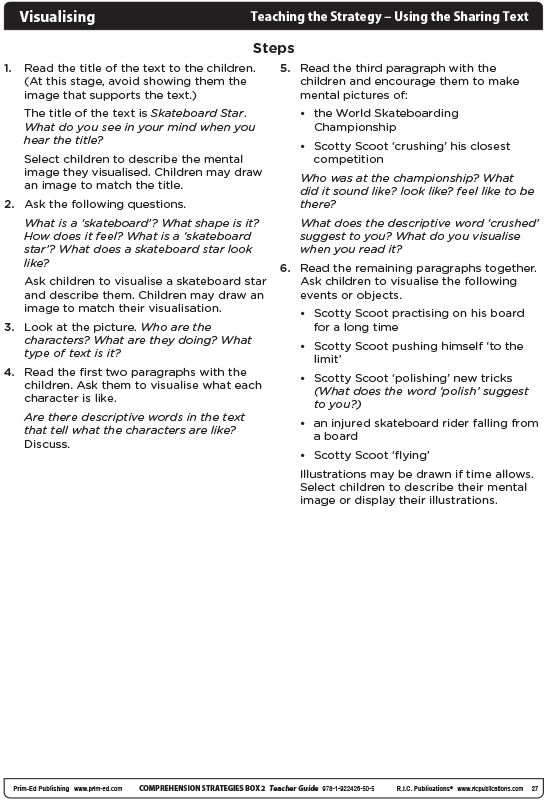


Sample pages from Teacher Guide 2 in The Comprehension Strategies Box series.
The children can then work on some of the activity cards, either individually, in pairs or in small groups. The teacher should select a particular level of card (1, 2 or 3), depending on the reading level of the child or group. A placement test is provided to help with this. There are two texts on each card, so children can practise the visualising strategy using more than one text. The children should use the corresponding resource sheets in the activity book which pose questions and activities that children will need to use visualising skills to answer.
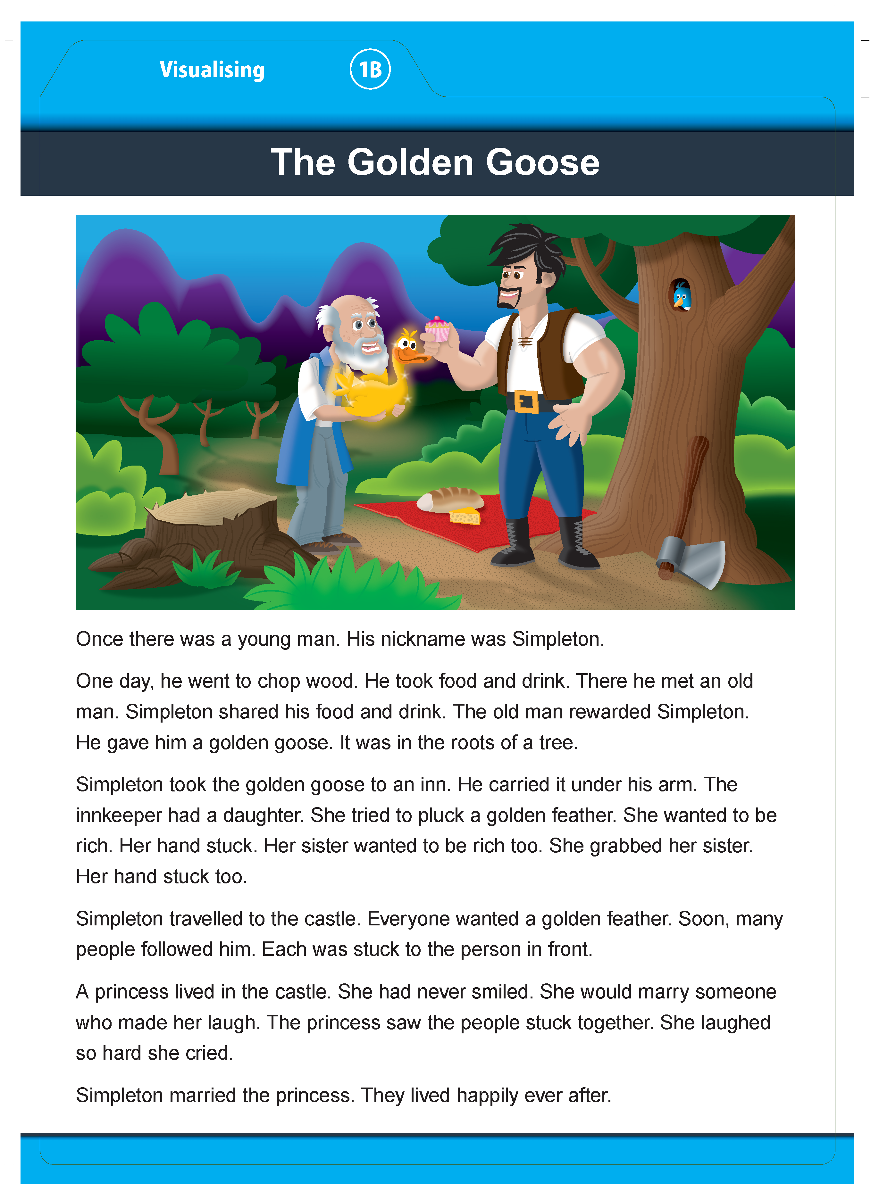
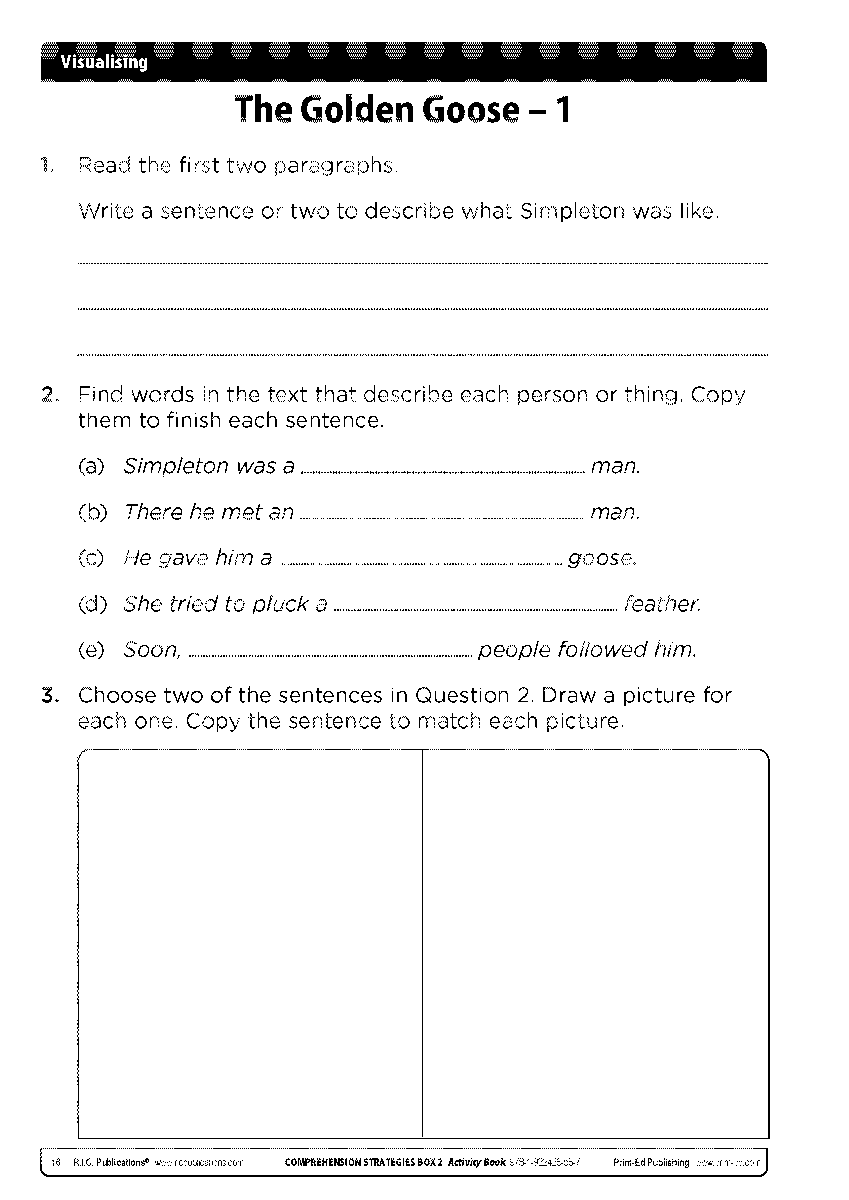
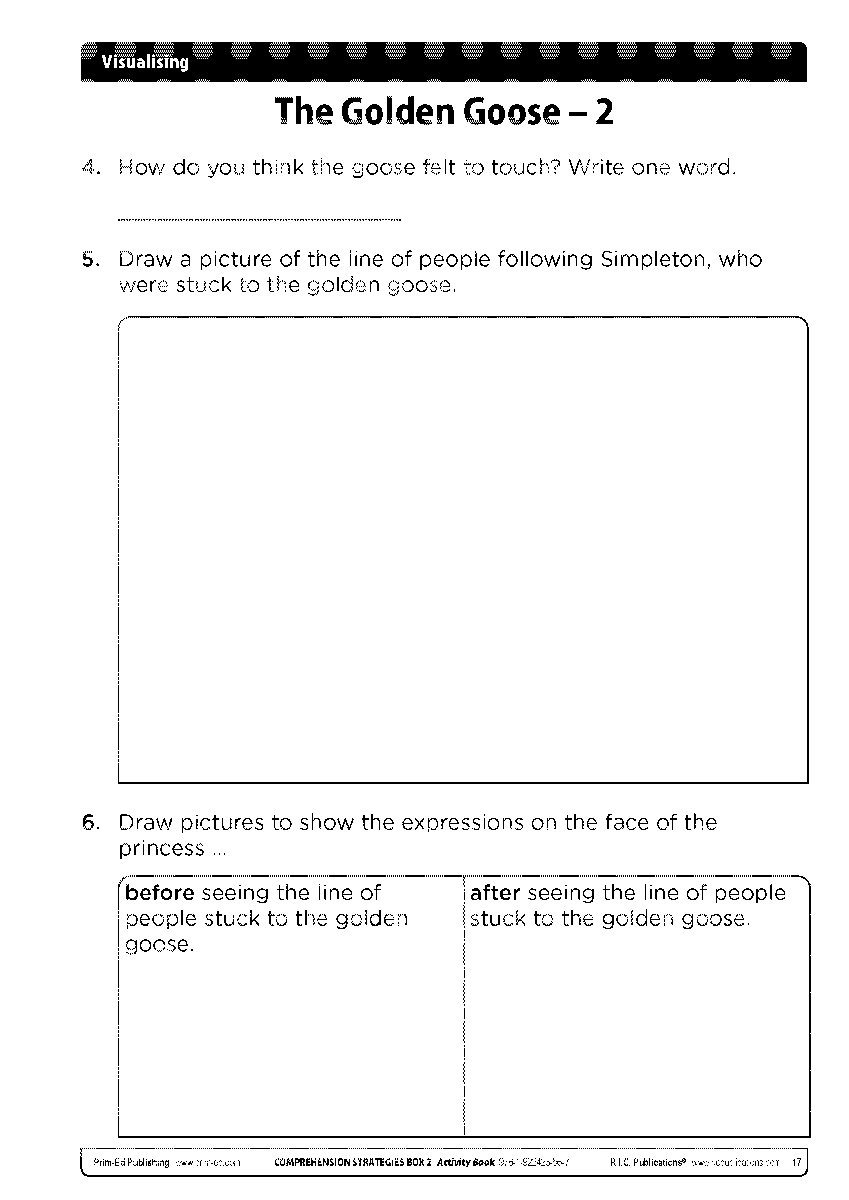



Card and sample pages from Activity Book in The Comprehension Strategies Box 2.
The teacher can use the assessment text in the teacher guide and the corresponding assessment questions to assess how well each child has understood and can use the visualising comprehension strategy.
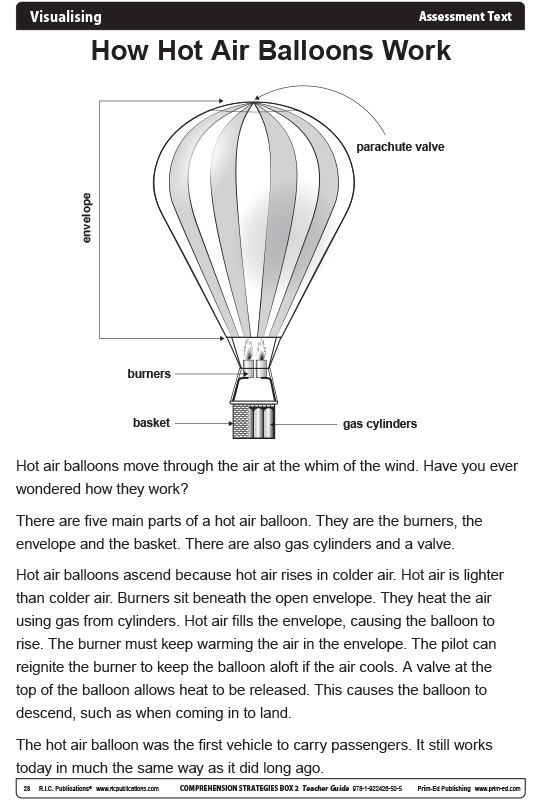
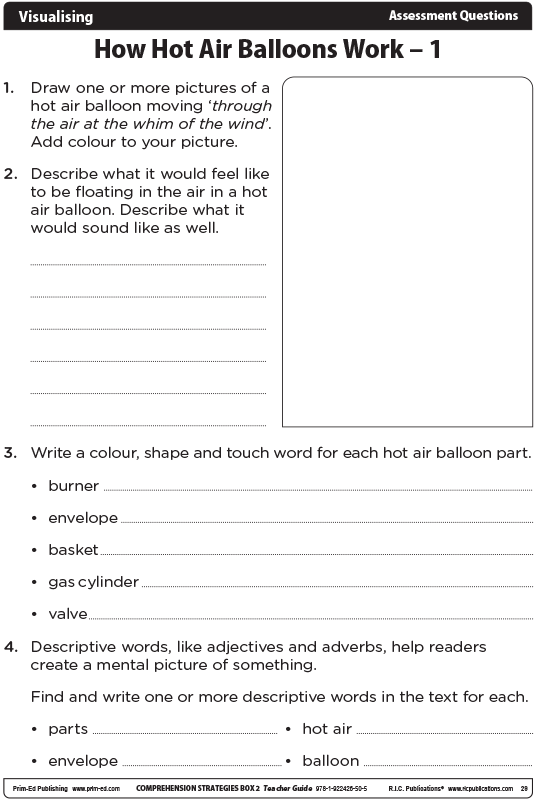
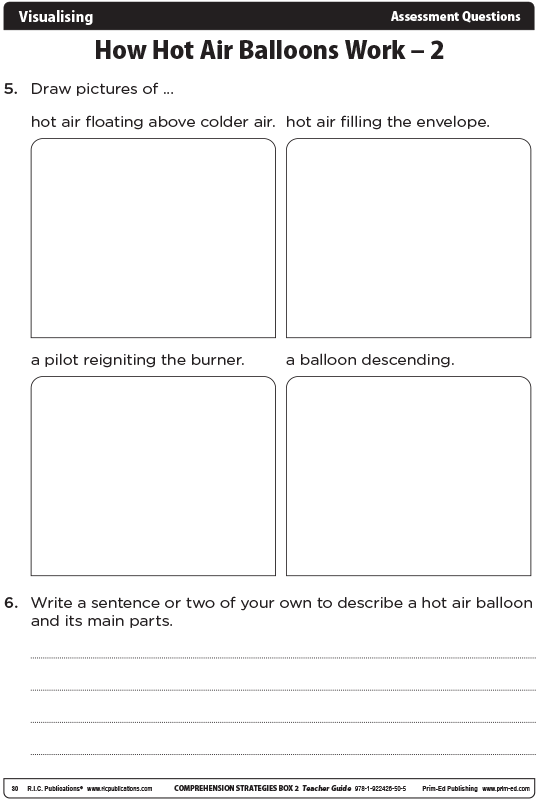



Sample pages from Teacher Guide 2 in The Comprehension Strategies Box series.
More Information About The Comprehension Strategies Box:
For further information about The Comprehension Strategies Box and to view sample cards and pages from other levels, check out the series page here.

